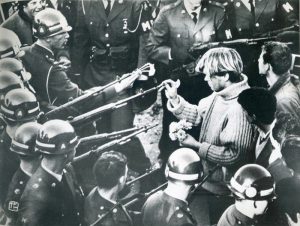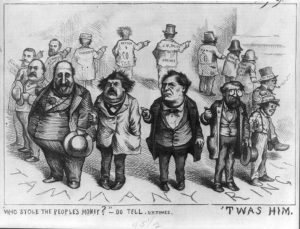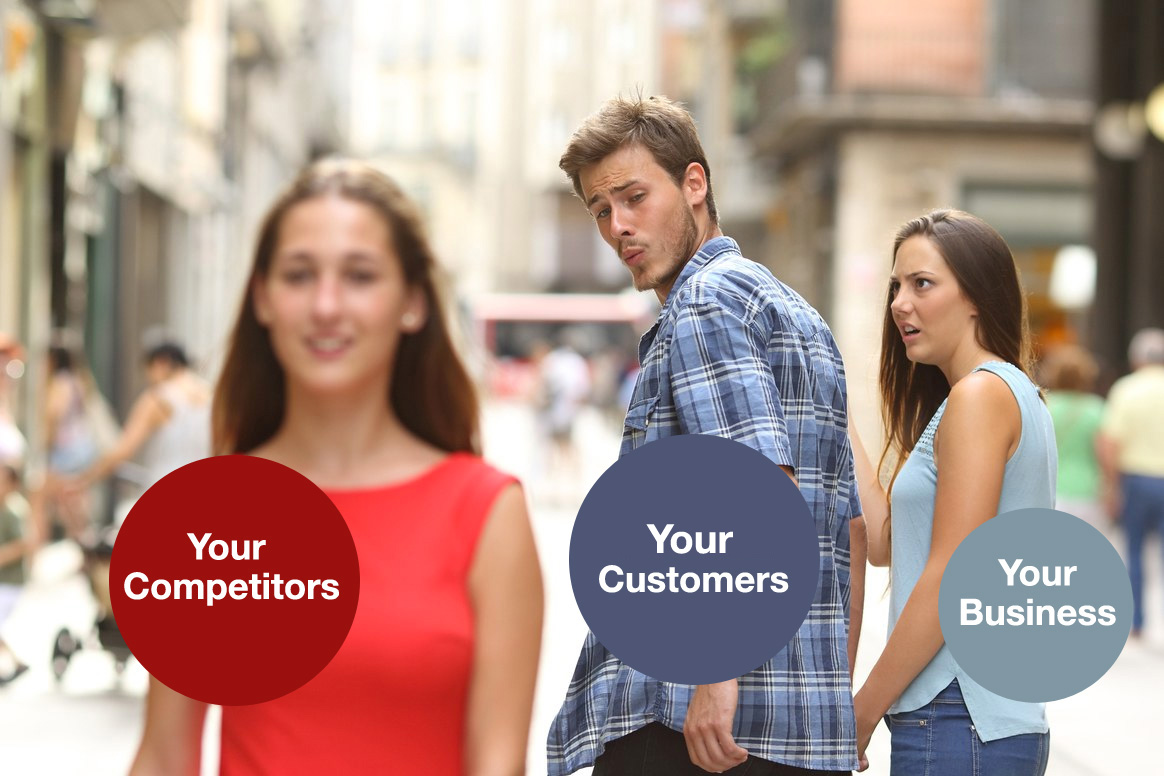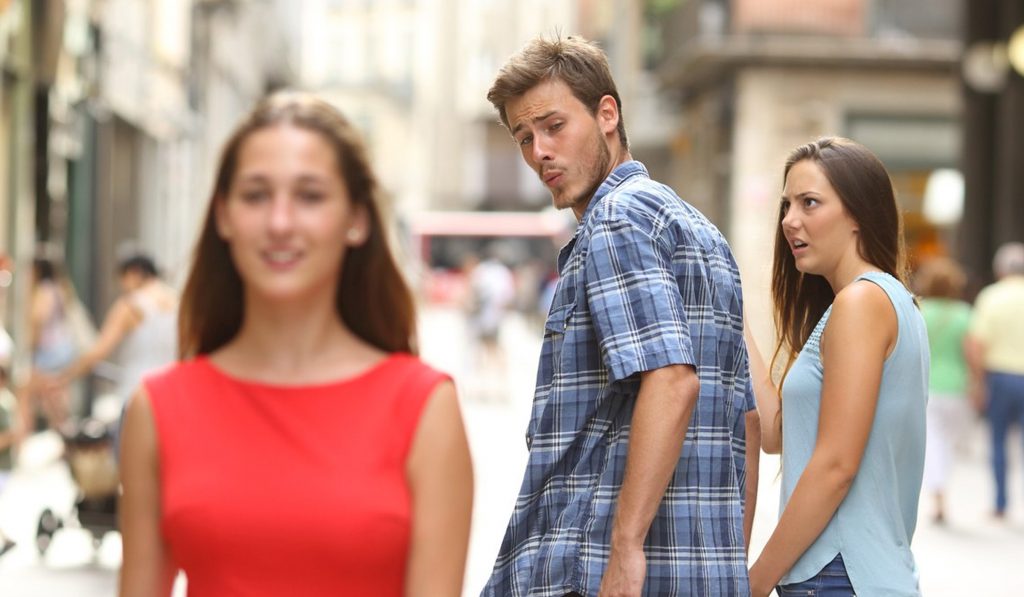The Importance of Visual Storytelling
I’ve been reading a lot of articles lately extolling the virtues of storytelling in marketing. Generally, these articles tend to revolve around a brand using stories as a motivational tool to encourage potential customers to interact, buy, or contact. Unless you’re Christopher Nolan, we tend to think of storytelling as a narrative, linear, start-to-finish path from the opening sentence to close, unfolding over time. But successful storytelling can be more than that. A single, flat, static image can convey an entire story and, at its best, can form an iconic communicative tool that can be used to motivate and move.
 Take for example the 1967 Flower Power photograph by Bernie Boston of a young man in a turtleneck sweater placing flowers into the barrels of the guns of National Guardsmen at a war protest on the National Mall in Washington, DC. The black-and-white image tells a story of conflict and peaceful protest, of defiance and culture clash. Similarly, the “Tank Man” photo taken by Jeff Widener in 1989 showing a sole man stopping an advance of a column of tanks in Beijing, illustrates the power of a single image to tell a story. Like the Flower Power image, it communicates defiance, opposition, and protest, of one versus many, of civilian versus military, of individuality versus the collective. These single images tell powerful stories that connect us viewers to the events unfolding before our eyes.
Take for example the 1967 Flower Power photograph by Bernie Boston of a young man in a turtleneck sweater placing flowers into the barrels of the guns of National Guardsmen at a war protest on the National Mall in Washington, DC. The black-and-white image tells a story of conflict and peaceful protest, of defiance and culture clash. Similarly, the “Tank Man” photo taken by Jeff Widener in 1989 showing a sole man stopping an advance of a column of tanks in Beijing, illustrates the power of a single image to tell a story. Like the Flower Power image, it communicates defiance, opposition, and protest, of one versus many, of civilian versus military, of individuality versus the collective. These single images tell powerful stories that connect us viewers to the events unfolding before our eyes.
 But not all visual storytelling is about protest and conflict. Cartoonists have always known that a well-crafted illustration can tell a story in a single frame. Nast’s depictions of Boss Tweed at the end of the 19th century are justly credited with bringing him and his corrupt Tammany Hall cronies down. As Tweed famously said, “I don’t care a straw for your newspaper articles. My constituents can’t read. But they can’t help seeing them damn pictures.”
But not all visual storytelling is about protest and conflict. Cartoonists have always known that a well-crafted illustration can tell a story in a single frame. Nast’s depictions of Boss Tweed at the end of the 19th century are justly credited with bringing him and his corrupt Tammany Hall cronies down. As Tweed famously said, “I don’t care a straw for your newspaper articles. My constituents can’t read. But they can’t help seeing them damn pictures.”
Today, we live in a society where the generation and dissemination of photos is as easy as clicking a button on our phones. Most photos posted to Instagram are simple documentary photos—this is my dinner, this is me with my friends, this is a sunset on the beach. They’re fine and can be beautiful but often lack the storytelling of a truly compelling image.
Have a look at the “Distracted Boyfriend” image that has become a meme. While somewhat cheesy, the photo tells a story at a single glance and people all over the internet have modified it again and again to tell other stories, their stories. While funny, the image is a great example of how a simple image can tell a story that’s larger than the frame of the photo and how it can be used to communicate larger issues.
Why is this stuff important?
Sometimes it’s important that a photograph serves as a means to document something tangible. A photo of a model wearing a shirt on an e-commerce site should properly document how that shirt looks when worn, for example. But many times clients miss out on the opportunity to communicate a larger, more nuanced story to an audience because they’re only thinking that a photo should only do just that—document. Photographs on a restaurant website shouldn’t just document the food, they should tell the story of the place, the people, the energy of the environment. Photos of a college campus should not just document the buildings and people but should show lively interaction, show the context within the larger world, and should communicate the story and mission of the school to the prospective student, donor, or alum. In business, visual storytelling has the opportunity to connect and resonate with potential customers, employees, partners, and investors, by communicating the uniqueness of your business and differentiating it from competitors through simple, powerful, and effective means.
And, after all, don’t you want your story told?






